
Updates on drip irrigation and caterpillar tunnels (plus cantaloupes)
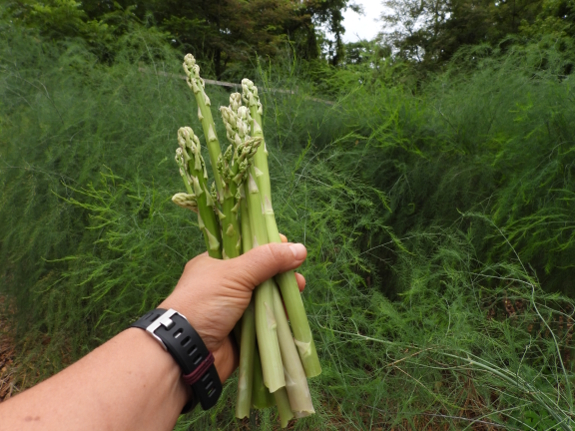
July and August are always the months when I look at our garden and
despair. Not for the usual reason --- weeds. But because perfection was
not achieved.
This year, we're trying out drip
irrigation, set on a timer to water for three hours twice a week.
When I got the first monthly water bill, it had skyrocketed up $55.
Yikes! Was the haul worth the sticker shock?
On the one hand...very much! All of that water has our asparagus
sending up enough spears that we're harvesting a meal weekly, figuring
we might as well pick the spears since the canopy is already completely
full of happy, older fronds. At organic, summer prices, that pays for
about half of our water bill right there.
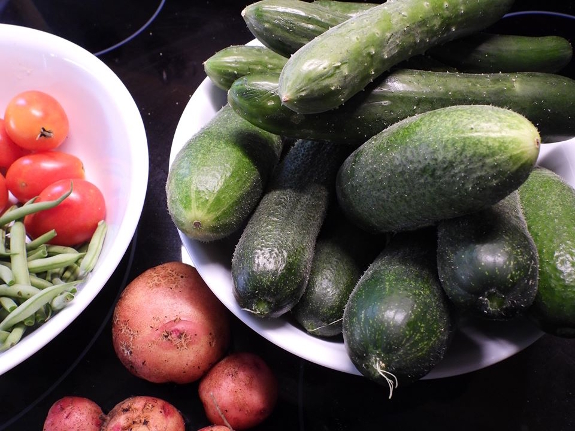
And the cucumbers! I always succession plant in case bugs and disease
get the early crops, which means we've been rolling in cukes. We eat
about six a day and I've still been having to gift grocery bagsful to
the neighbors.
Oh, and did I mention lettuce? Mark's gotten into the habit of making
us salad for lunch every day, which can be tough in the summer. But
drip is keeping leaf lettuce soft and delicious as long as I plant a
new bed each month.
So what's the problem?
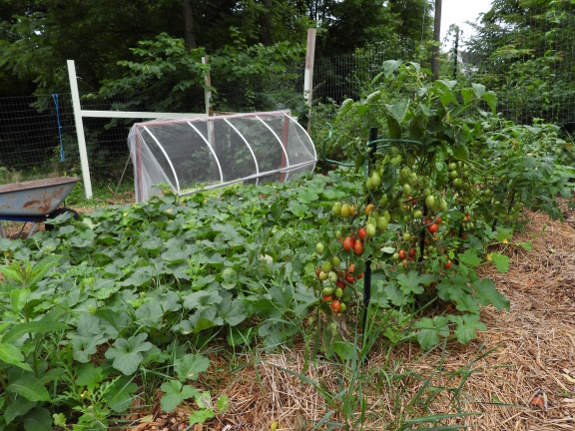
The walnut trees. We have a couple of largish black walnuts about
fifteen feet from one corner of the garden and they never caused
problems in the past. But I suspect irrigating strips of garden beds
tempted walnut roots to concentrate their attention on my growing area.
As you likely know, walnut roots produce toxic juglone. When many
garden plants come in contact, they go kaput.
To cut a long story short, the first to wilt were the tomatoes. Then
the summer squash --- we only got one zucchini! The pepper plants look
okay, but they're barely producing. Even the green beans appear to have
been hit.
And the walnuts are sandwiched right between the garden fence, the
electric pole, and the road. I suspect we're going to have to hire a
pro to cut them down. Expensive!
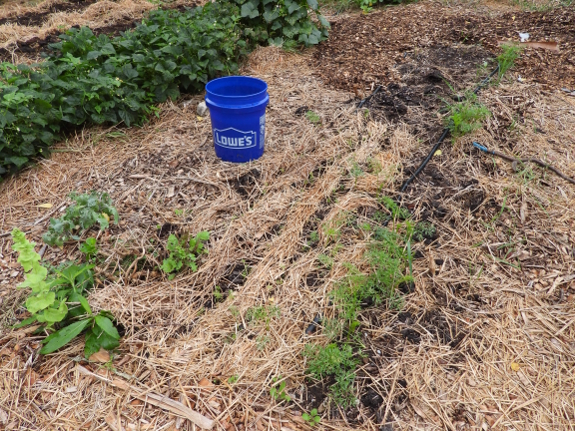
Hopefully that will be a one-time fix. The other issue, not so much.
The photo above shows my carrot bed. Notice how the only sizeable
plants are right along the drip line? I started some more carrots
inside (the tiny plants closer to the bucket) to fill in the gaps.
Lesson learned --- drip irrigation isn't sufficient to get fall crops
up and running during our parched summers up on the ridge.
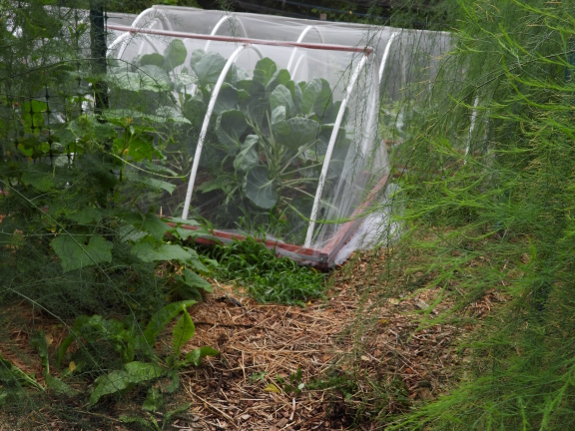
Okay, enough about drip. How about Mark's caterpillar
tunnels?
On the one hand, they are awesome! Look at those brussels sprouts ---
thriving under their covers!
On the other hand...wedding tulle is so very, very tender. I swear, our
caterpillar tunnels sprout holes even when they haven't been touched.
I've been mending these gaps at least once a month, but even that
wasn't enough to keep caterpillar worms out of one tunnel. On the other
hand, the
real fabric intended for this use is $300 and up per roll, so maybe
I'll learn to enjoy mending.
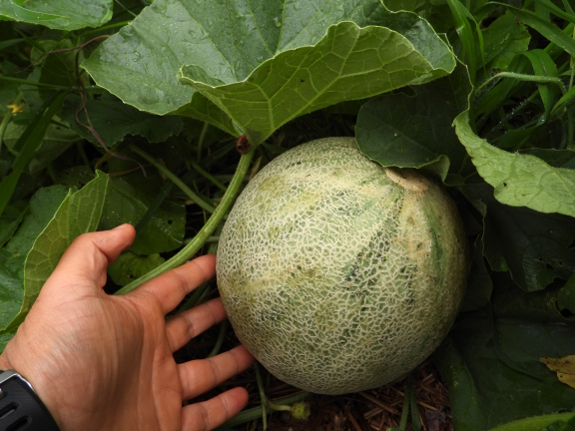
In other news, while I've had lots of unexpected garden failures this
year, I've also had one unexpected success. I've never managed to ripen
melons previously, which was mostly due to viral diseases caused by
bugs. But research turned up the tidbit that melons are very sensitive
to cool soil, so I held my horses and planted a disease-resistant
cantaloupe (Divergent) outside on June 4 (after starting the seeds
inside a month before).
How's it doing? The vines are taking over the garden! There are lots of
big fruit hiding under those leaves, the skin crackling and starting to
yellow!
Which brings me to the garden lesson I never seem to learn --- for
every unexpected loss, there's an unexpected win. Now if I can just
figure out when cantaloupes are ripe...
Want more in-depth information? Browse through our books.
Or explore more posts by date or by subject.
About us: Anna Hess and Mark Hamilton spent over a decade living self-sufficiently in the mountains of Virginia before moving north to start over from scratch in the foothills of Ohio. They've experimented with permaculture, no-till gardening, trailersteading, home-based microbusinesses and much more, writing about their adventures in both blogs and books.
Want to be notified when new comments are posted on this page? Click on the RSS button after you add a comment to subscribe to the comment feed, or simply check the box beside "email replies to me" while writing your comment.

Have you considered fine mesh hardware cloth for your tunnels? I used a bunch of it lately to reinforce an enclosure that was the wrong bar width for baby rats as mine grew up.
It was 5 dollara for a 3x15 foot roll at my local hardware store for a very small spacing. Maybe it would be enough?
My other recommendation is maybe ordering and repurposing a mosquito net for a large bed. Those would definitely be small enough for thr catepillars!
At work I often use "infusion mesh" to distribute resin over a vacuum infusion part. Its strands are a lot thicker than those of the tule you've been using, so it should be a lot sturdier. The openings in the mesh vary by brand but are in the order of 1-2 mm (0.04 to 0.08 inches).
Everyone whose comments I missed two years ago....ooops.
Cynthia --- I'm so glad the new email reached you! We're slowly but surely starting to put old (and new) projects up on the web for folks to enjoy, so expect an email a month with updates.
(If anyone else wants to be on the list but isn't, scroll down and you'll see a signup form.)